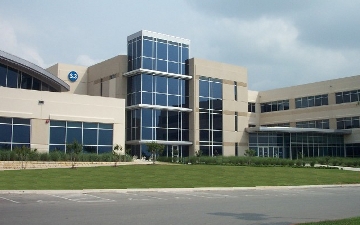Dell's secret to riding out the recession

CIO Robin Johnson on saving $300m in a virtual-server world
Dell CIO Robin Johnson is tasked with steering the company through the credit crunch. Nick Heath talks to Johnson about budgets, datacentres and virtualisation
"The IT industry in a downturn is a tough place to be. I have seen that play out in multiple companies in my career," Robin Johnson tells silicon.com.
The Dell CIO is seeing it play out right now - with revenues dropping $3.7bn year on year during the last financial quarter, the cost-cutting axe has fallen on his IT department.
Johnson had his budget trimmed by 10 per cent this year, leading to positions being cut in Dell's IT workforce.
Johnson's straightened IT budget comes against a backdrop of Dell's drive to cut costs by $4bn by 2011, which was announced by CFO Brian Gladden in February this year, after the company's net income almost halved during the final quarter of the last financial year.
"As you reduce budgets across the board, IT is typically a high spending part of the organisation and IT gets its share of the cuts," Johnson told silicon.com.
At the same time, Johnson said, the drive for greater efficiency during the downturn means there's an increased demand placed on the IT department.
"Very often the business units that IT serves need more automation to be cheaper, so what tends to happens is you get faced with budget reduction and an increased demand."

"Next year I think the budget will be flat but I expect it to be used much more efficiently," he added.
The doing-more-with-less mantra is in evidence in the sweeping cuts currently being made to the size of Dell's server farm.
Two years ago, the company was considering building an additional datacentre at the cost of $200m to $300m.
Now, thanks to virtualisation, the company has boosted processor utilisation rates beyond the 20 per cent it was getting previously and it plans to decommission about 8,000 servers by January 2010 - just under a third of its 25,000-strong server estate.
"The question was 'How can we use the 80 per cent of the server [processing power] that is not being utilised?'.
"We went down a very aggressive virtualisation path and are achieving consolidation ratios between 5 to 1 and 10 to 1, depending on the class of application.
"We have gone from an ever-expanding infrastructure footprint and needing an extra datacentre, to closing down two datacentres this year."
On top of the one-off savings from not building another datacentre, virtualising server hardware has reduced Dell's annual IT running costs by $38m, and it hopes to increase this saving to $60m by January 2010.
Johnson said that cutting the cost of running hardware was becoming increasingly important, both for Dell and its large enterprise customers.
"If you look at the IT environment [global corporate IT spend], $1.2tr is spent on infrastructure per year, but only about $400bn is the actual infrastructure, the rest is running costs," he said.
"Power is becoming the big cost bucket - it's no longer the hardware, it's not even engineering anymore, it's the powering up of infrastructure and the running and cooling of the datacentre."
The next step for Johnson will be to look at how Dell could make further efficiency savings by virtualising more of its storage.
The company has also invested in other efficient technologies, with thin client devices used by about five per cent of its 10,000 desktop users and virtual desktop software deployed in all of its call centres.
Johnson said the company is approaching the point where only 50 per cent of the IT budget is spent on running its systems, lower than the industry norm of 70 per cent.